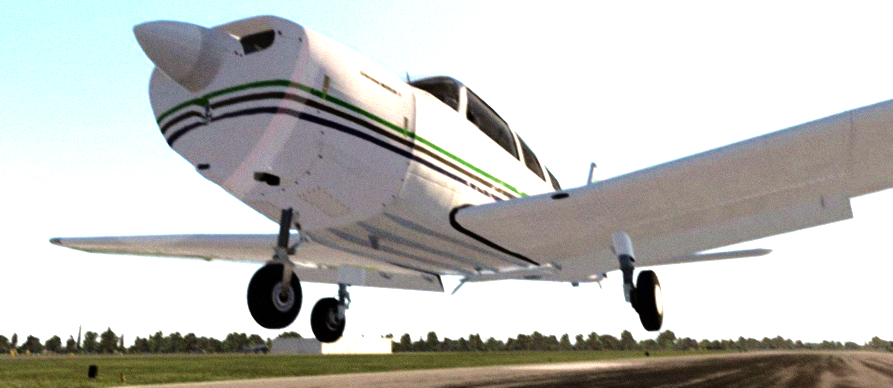
Every flight begins with a takeoff. Getting up into the air can appear easy, but doing it safely requires pilots to develop better control of the airplane to manage varying wind conditions and airplane climb performance.
A normal takeoff is one in which the airplane is headed into the wind. The pilot should also ensure that the takeoff surfaces are firm and of sufficient length to permit the airplane to gradually accelerate to normal lift-off and climb-out speed, and there are no obstructions along the takeoff path.
There are two reasons for making a takeoff as nearly into the wind as possible. First, since the airplane depends on airspeed, a headwind provides some of that airspeed even before the airplane begins to accelerate into the wind. Second, a headwind decreases the ground speed necessary to achieve flying speed. Slower ground speeds yield shorter ground roll distances and allow use of shorter runways while reducing wear and stress on the landing gear.
Prior to taking to the runway
- Complete Aircraft run-up and configuration.
- Complete all checklists and briefings
- Obtain takeoff and departure clearances, if required (towered airport)
- Check that runway and approaches are all clear before crossing the airport hold short line
Taking to the runway
- Line up on runway centerline, nose wheel straight
- Select a reference point straight ahead for tracking
- When aligned with the runway centerline you must ensure both feet are on the rudder pedals so that your heels are on the floor of the airplane, your toes or balls of the feet are on the rudder portions, not on the brakes.
Begin takeoff / Takeoff roll
- Apply full throttle smoothly and positively.
- Keep straight with rudder
- As the airplane starts to roll forward, complete the REACT checklist (RPM’s, Engine Gauges – (green), Airspeed Alive, Centerline, Takeoff abort point) (below)
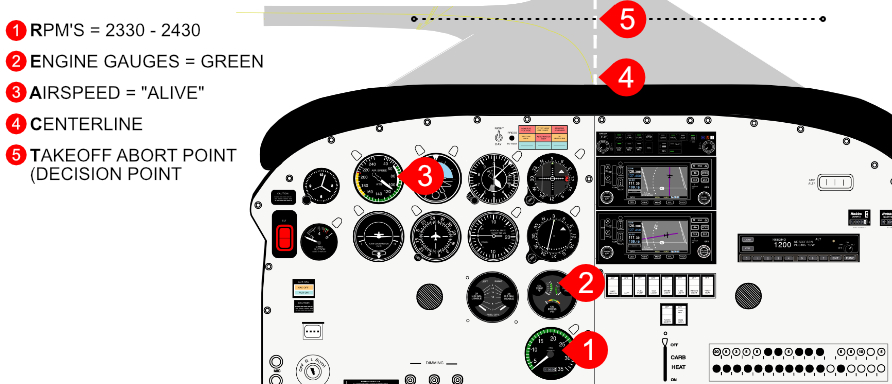
- Continue to, monitor the engine instruments for indications of a malfunction during the takeoff roll.
- At the same time, the rudder pedals are used to keep the nose of the airplane pointed down the runway and on the centerline.
- As the speed of the takeoff roll increases, more and more pressure will be felt on the flight controls, particularly the elevators and rudder.
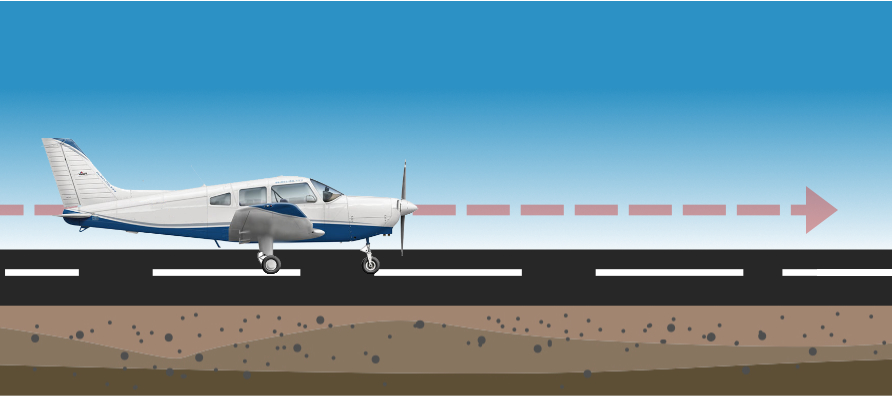
Rotate
- When reaching the aircraft’s published rotate speed (Vr) the back-elevator pressure should be applied to raise the nosewheel slightly off the runway, thus establishing the takeoff attitude.
- Allow the airplane to lift off the surface and climb.
(Note: The airplane will fly when it’s “ready” – don’t try to pull the airplane up into the air – this could result in the airplane settling back down on the runway)
- Use right rudder to offset left turning tendencies as required
- When airborne, hold the pitch attitude to establish the climb airspeed (Vy)
- Vy can be achieved through pitch attitude (using sight picture – nose to the horizon) using the elevator control.
- Once you have achieved Vy you should use trim to maintain that pitch attitude to alleviate excessive control pressures.
- The wings should be leveled after lift-off and the rudder used to ensure coordinated flight.
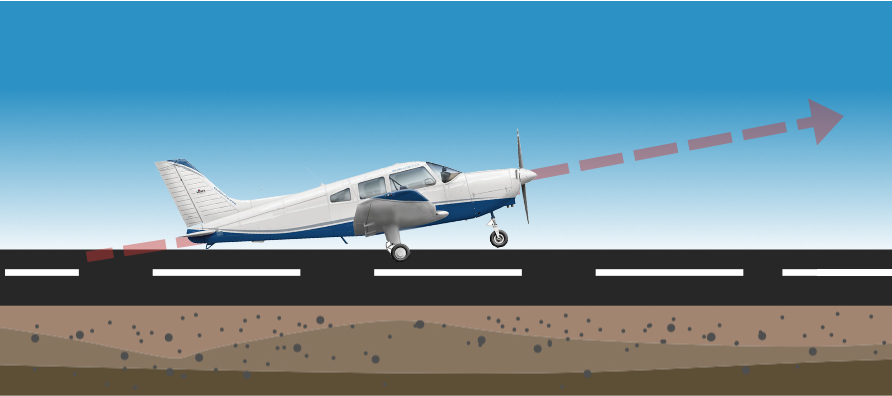
Initial Climb
- Upon lift-off, the pitch attitude should adjusted be that to allow it to accelerate to and climb at Vy. (sight picture!)
- This is the speed at which the airplane gains the most altitude in the shortest period of time.
- If the airplane has been properly trimmed, some back-elevator pressure may be required to hold this attitude until the proper climb speed is established.
- During initial climb, it is important that the takeoff path remain aligned with the runway to avoid drifting into obstructions or into the path of another aircraft that may be taking off from a parallel runway.
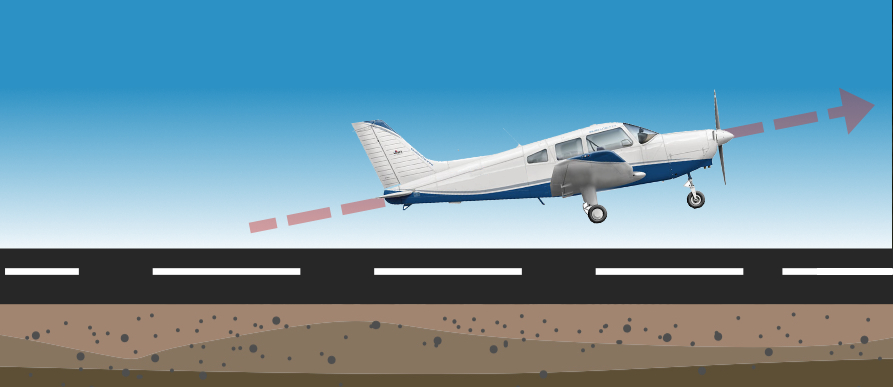
Pilots should depart the runway environment in coordinated flight at the best-rate-of-climb speed (Vy). Maintaining the best-rate-of-climb speed quickly allows the necessary altitude to be attained in order for a safe return to the airport in the event of an emergency
A departure at best-angle-of-climb speed (Vx) should only be used only for obstacle clearance utilizing short-field takeoff procedures
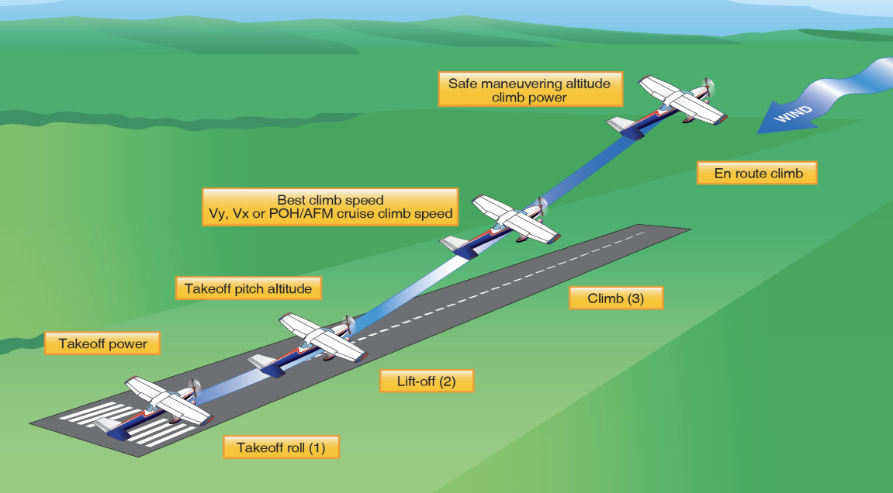
The risks and potential consequences of climbing out at speeds less or greater than what is required for a particular type of takeoff should be considered for every takeoff.
Some Common Errors when making a normal take off are:
- Improper runway incursion avoidance procedures.
- Improper use of controls during a normal or crosswind takeoff.
- Inappropriate lift-off procedures.
- Improper climb attitude, power setting, and airspeed (VY).
- Improper use of checklist